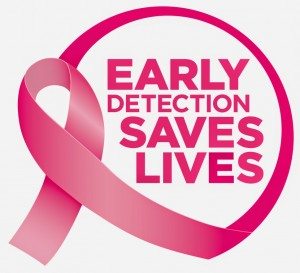 How to detect breast cancer early?
How to detect breast cancer early?
Prevention is better than cure. The adage rings true for so many problems and issues, and breast cancer is one of them. Detecting breast cancer early can save your life so beginning with checks early on in life is a must. There are a number of ways you can check for breast cancer, ranging from checking yourself to a variety of tests done by a specialist, however before even thinking of starting a check or taking any tests, consult your doctor or medical health practitioner to get all the advice you require on the disease and necessary steps to take.
What causes breast cancer?
Breast cancer, as with all other forms of cancer, is a disease whereby a person’s body produces abnormal cells that then multiply uncontrollably. These cells can remain in one area of the body or travel to various parts of the body where they are not found – this type of cancer is called metastatic cancer.
Breast cancer begins to develop in the breast tissue, primarily in the glands or milk ducts, and even if travels to other parts of the body, it is still known as breast cancer (advanced breast cancer) due to its origin. Cancer usually begins with the formation of a small, confined lump or tumor, or tiny calcium deposits, which then spread throughout the breast to the lymph nodes or other organs through the bloodstream. There are various types of breast cancer, each of which develops and spreads at different speeds – some may take a few weeks while others take years to develop.
Major causes of breast cancer
While precise causes of breast cancer are not yet known, there are some main risk factors that increase chances of getting the disease:
- Family history – if previous family member have suffered from breast cancer
- Advancing age
- Previous breast cancer, endometrial, ovarian or colon cancer
- High doses of radiation
- Obesity
Symptoms
- A persistent lump in your breast after the menstrual cycle
- Pain or tenderness in the breast
- Swelling in the armpit
- Changes in the shape of the breast – flattening or indentation
- Changes in the size, contour, texture, or temperature of the breast
- Changes to the nipple – dimpling, itching, burning, or retraction
- Unusual discharge from the nipple
How to diagnose breast cancer in early stage?
Fortunately, if caught early enough, breast cancer is very treatable and localized tumors can be treated successfully before the spread of the disease, however once cancer has spread, it’s hard to treat, but still manageable. The most efficient way to detect breast cancer is by a clinical breast exam or a mammogram; however the easiest way to detect breast cancer early is to start checking yourself with a self-exam.
1. Breast Self-Exam- This type of exam involves looking and feeling at your breast and noting any changes. Stand naked from the waist up in front of the mirror and examine your breasts thoroughly, taking note of the shape, size, position, looking for anything unusual or different. Turn from side to side and re-examine, and then lean forward and look for any changes in the contour or shape. Check your breasts by clasping your hand behind your head. Finally, check your nipples for any unusual discharge or changes in color, size, form or texture.
Now you need to check for any changes by feeling your breasts, and this is easier if you are wet, so best done in the shower, or with body cream. Check each one separately, while the other arm is raised above your head and move slowly in a clockwise direction, being sure to prod all areas of the breast for any abnormal lumps or bumps gently. Repeat with the other breast and don’t forget also to check your lymph glands in each of your armpits. Should you find anything unusual, consult your doctor immediately – it might not be breast cancer. However, it is best to get it checked as early detection can save your life if it is cancer.
2. Clinical Breast Exam- A clinical breast is conducted by a medical health professional, such your doctor or a nurse, and should be part of every woman’s annual check-up from the age of 20 years. The doctor or nurse will go through the same process as you would with a breast self-exam, checking for any abnormalities, etc. You will need to provide the doctor with a full medical history if he/she does or already have it.
3. Mammogram- If required, your doctor will prescribe a mammogram to get a better look at anything that might be abnormal. A mammogram or mammography makes use of an X-ray machine to obtain in-depth images to detect abnormal growths or changes in the breast tissue. During a screening mammogram, the breast will be X-rayed from top to bottom and side to side while a diagnostic mammogram will focus on a particular lump or area of abnormal tissue.

